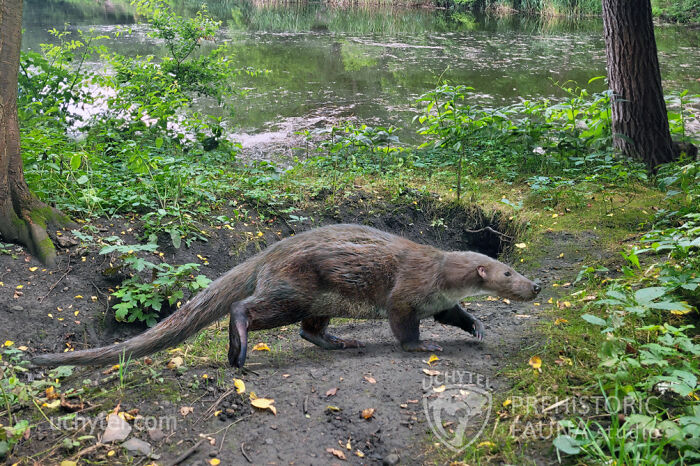Paleoartist Recreates Prehistoric Creatures For The 2025 Calendar
It means “Indian pig,” but it has nothing to do with pigs. It’s actually a whale of the future.

The 2025 Prehistoric Pocket Calendar by Roman Uchytel combines 12 stunning prehistoric animal illustrations, spaces for notes, coloring pages, and interactive QR codes linking to new reconstructions, offering a creative and immersive journey into the ancient world.
More: Roman Uchytel, Instagram h/t: boredpanda
It looks like a rhinoceros, but it is more closely related to elephants, sirenians, and hyraxes than to rhinoceroses.

It was called a “hell pig” because it looked like a big hog, even though it is not related to pigs. There are only a few live species that are closely related to it.

Simba is not linked to lions despite its appearance and name. This hyaenodont is unrelated to cats and dogs. It may have been the largest mammalian predator, but it died off.

Identifies as a camel, but recent research suggests it is a unique South American ungulate, related to the horse.

It looked like a small, stocky horse but was unrelated. It was an oreodont, and camels are its closest cousins.

This extinct mammal had nothing to do with hyenas, despite its name. It looks and may behave like the Tasmanian devil, a large marsupial relative.

Strangely enough, it looks nothing like an elephant. Horses, rhinos, and tapirs are all recent relatives of this animal. It is part of a strange group of animals in South America called the Meridiungulate.

Was a hunter with hooves, which sounds strange on its own. The animal that looked most like it was a deer or other even-toed ungulate, not a dog.

The “marsupial saber-toothed tiger” is another name for it, but it has nothing to do with cats. It’s more like a saber-toothed rat that has grown up.

Its Latin name, Alca impennis, which means “Great Auk,” comes from the fact that it looks a lot like a penguin. But it wasn’t a penguin; it was an auk, which is the closest living cousin and can fly. It also lived in the Northern Hemisphere, while all penguins have been found in the Southern Hemisphere.

It looked like an otter but was unrelated to modern otters and other animals. These species predated contemporary caniforms (Caniformia), including otters. Unfortunately, they had no descendants. Buxolestes were nature’s earliest semi-aquatic predators, but modern otters developed from more advanced species.


